Spring is gonna be early this year so I better get a potting. A Repotting.

I’ve had this red maple for about 7 or eight years now (I’m not really good with time, in case you’ve noticed)
Last year I removed all the wire and let it grow a bit wild with only a topiary cut now and then. Hence the reaching branches.


It’s tough to see but the trunk is totally hollow and there is a chimney-like opening in the top.
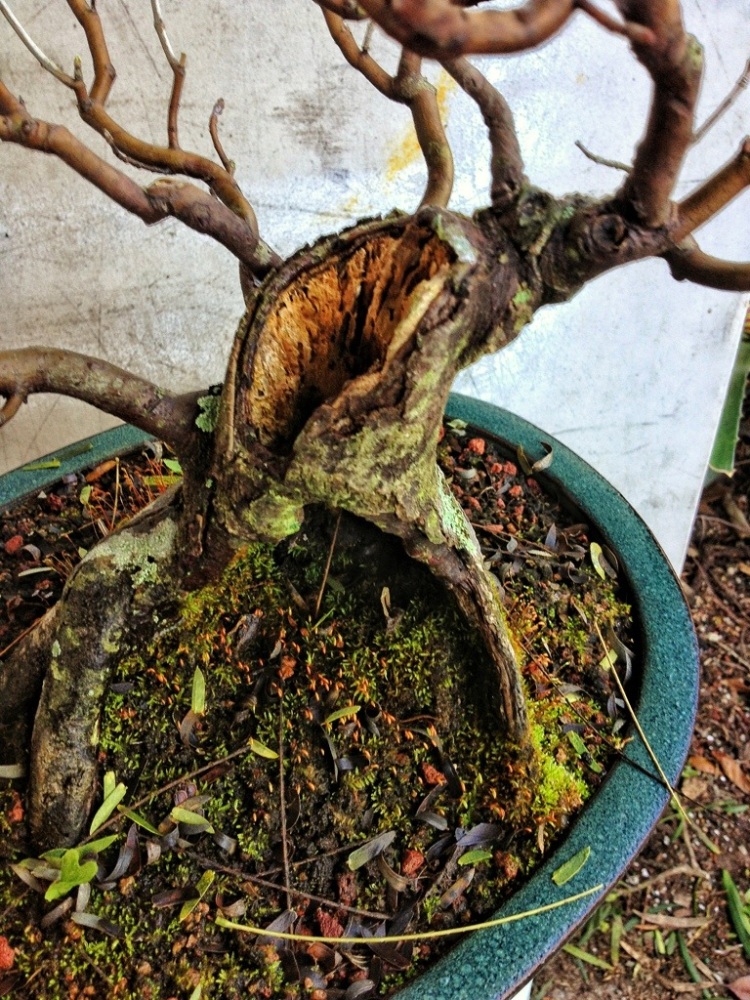
Pretty neat
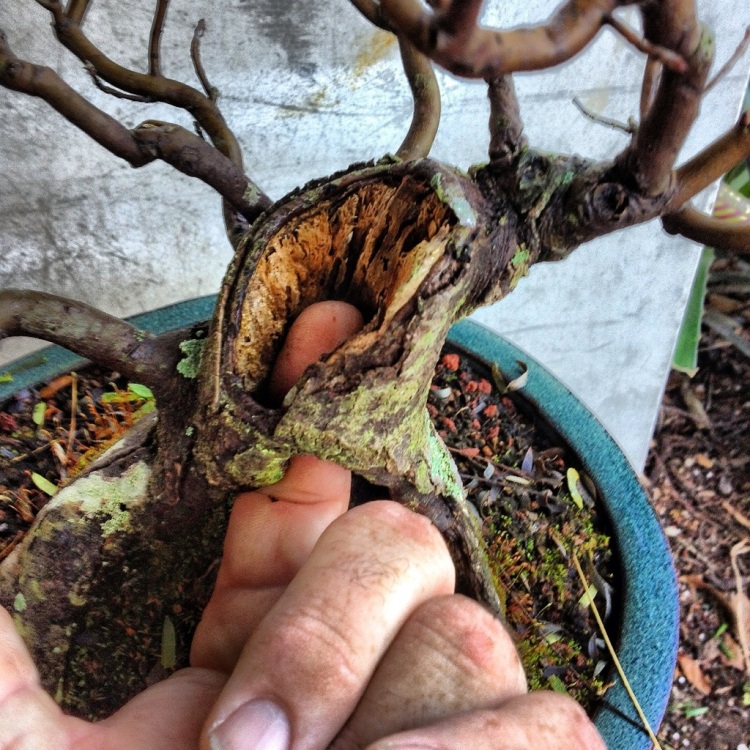
One of my Instagram friends said this looked like a feminine tree.
There is a story (with a moral to it) behind the procurement of this maple.
I purchased it from a landscape nursery probably about 8 (or 7) years ago. It was about 12 feet tall (3.657 meters to our metrically challenged friends).
To fit it into the automobile,I chopped it at about 3 feet (.914 meters).
This was in the middle of summer and the tree was literally dripping water from the chop site. It was going to die.
I asked my first teacher, Ray Aldridge, what to do. He said “Bonsai it!”
So I cut the roots (it was in a 10 gallon nursery can, thats 37.854 liters) and shortened it to about 8 inches high (do that one yourselves). I sealed the top and hoped for the best. I should add; the time to do this is drastic work is usually in the late winter.
By cutting the roots I slowed the water uptake (and, therefore the alow drip on top) and saved the tree. But, being an acer rubrum, it rotted through the middle, of course. The word is “serendipity” my friends.
I think it’s cool. And believe it or not, that thin bridge on the top of the trunk is still living.
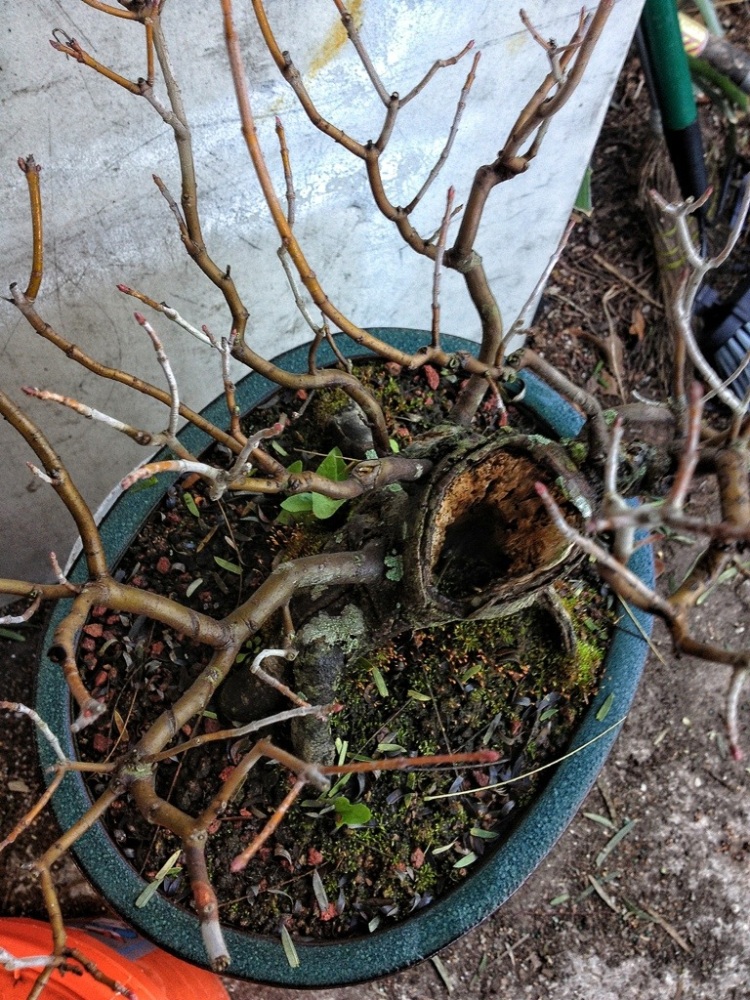
From the top.
For a red maple in Florida, it has pretty good ramification. The native bonsai-ists here in the sunshine state have very little respect for the red maple. They disdain it, cursing the tree for dieback and its watering needs. Personally, I just don’t think they’ve tried hard enough. I mean, have you ever tried to grow a black pine? Talk about prissy.
Anyway.
Back to the tree.

The branching has grown long and leggy; reaching up.
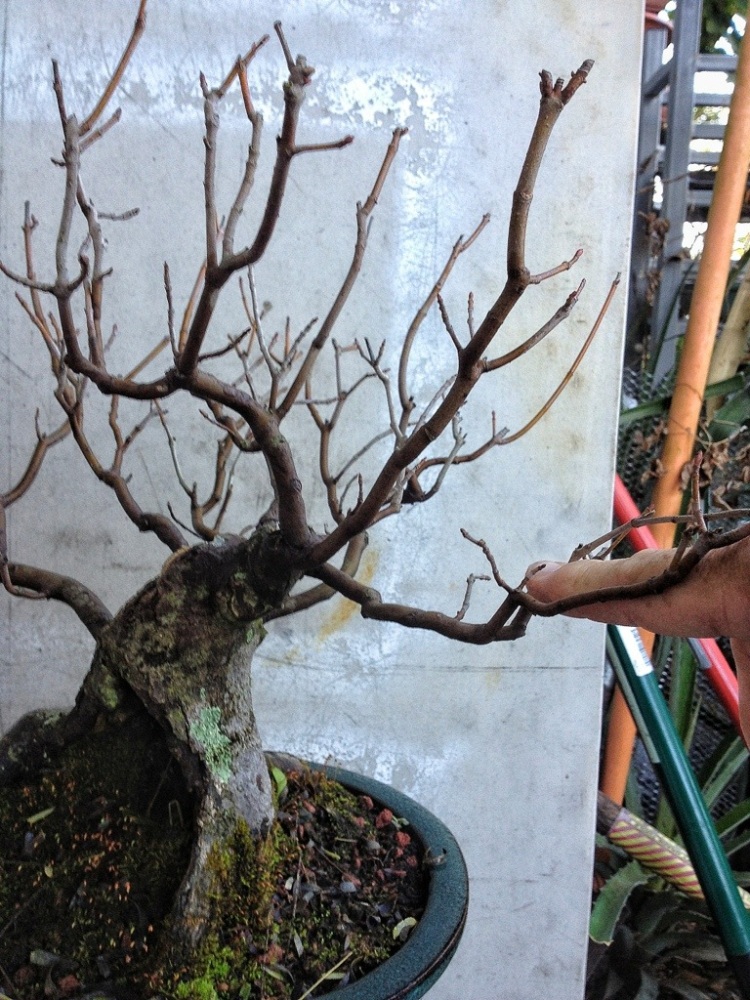
The limbs need to be brought down again to a horizontal attitude. And then sorted out a bit.
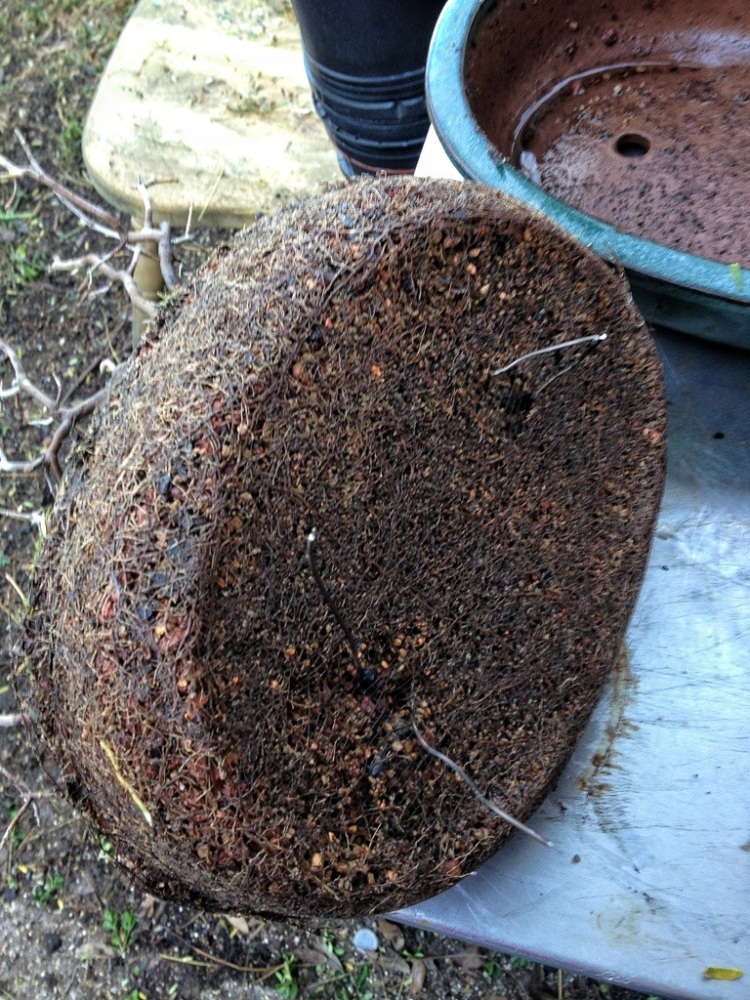
First, though, I need to repot.
This tree has been in a bonsai container for a while. I don’t think I repotted last year. All of the big roots have been removed and what is left are the fine, feeder roots.

Using my trusty homemade root hook I will comb out the root mass.
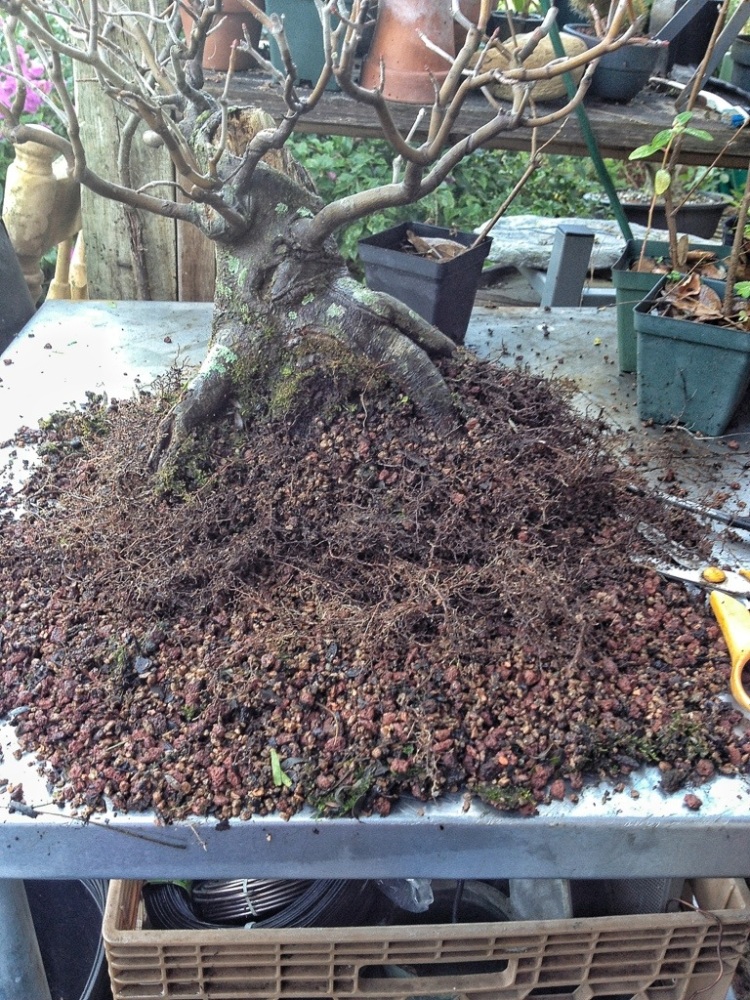
Thusly.

Trim all these long roots

Isn’t that beautiful? Look at that root mass. This is what you want to see in a healthy root system.

Now I wash out some of the old soil.
Pick out all the weeds (and their root systems) at this point and also use this time to clean the trunk.

I use my wife’s second best toothbrush for this. Angled, medium soft bristle. With wear indicators and gum massager.
And I’ll also brush the deadwood
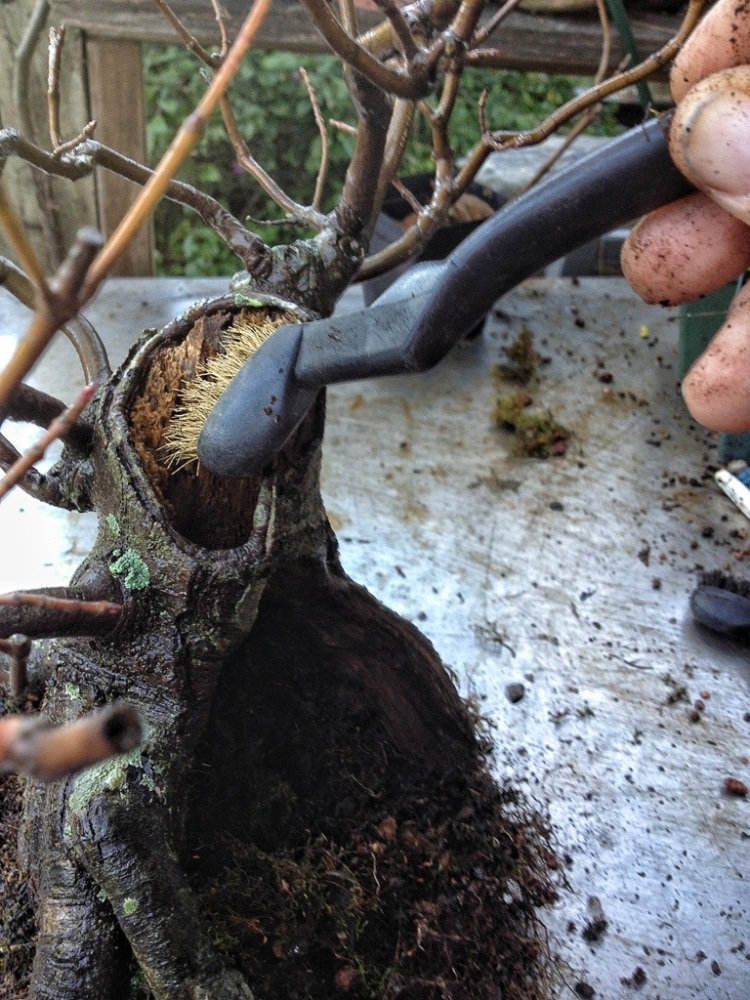
Brass works well here.
If you do this now you can spray off the debris and not worry about washing off all that new soil you just put on.
Now we choose a new pot.
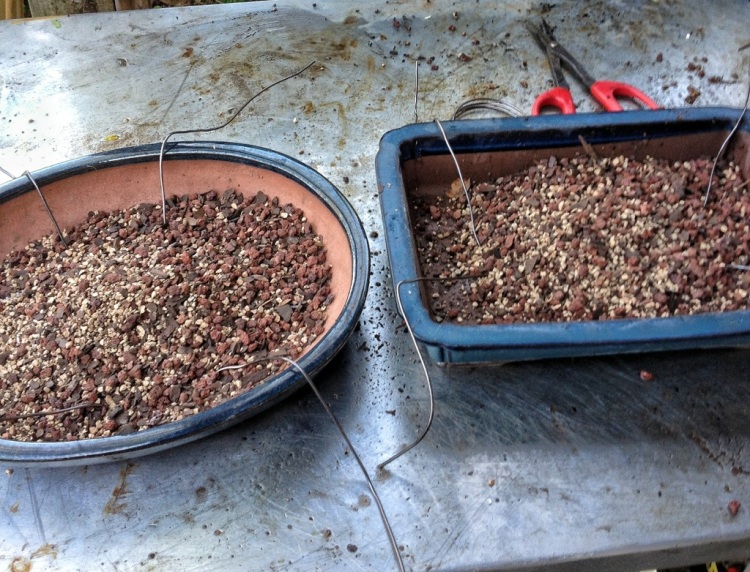
Oval or rectangle?
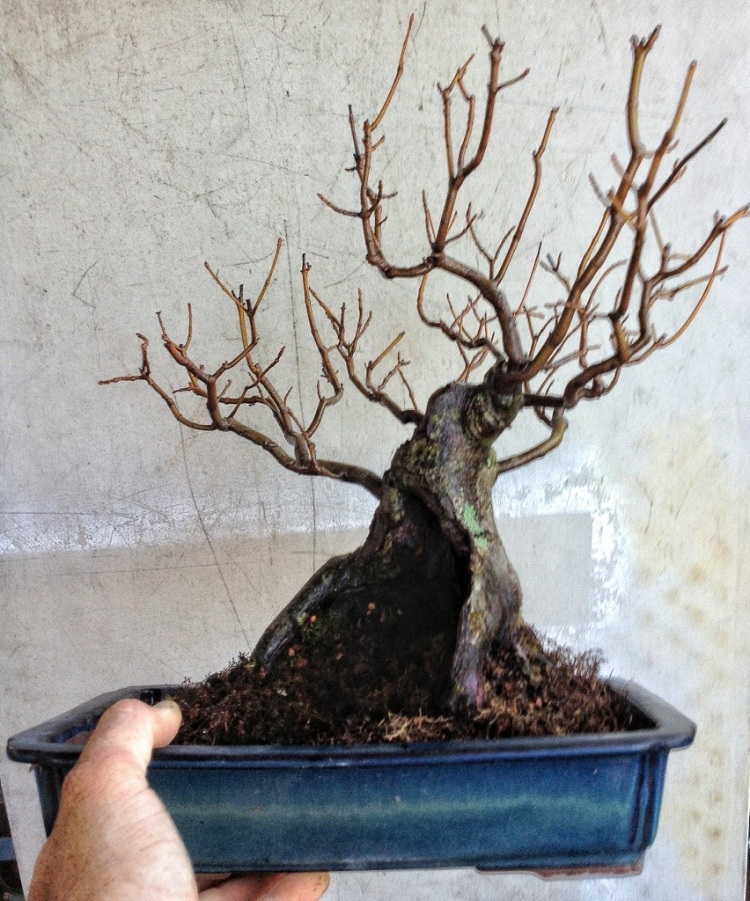
You might think this one. But, remember, I am going to bring the branching down, making the canopy wider, and when the leaves are on it it will be wider still.

And remember, this is a feminine tree. Feminine trees go in roundy pots.

Basic technique: mound the soil where you wish the tree to sit.
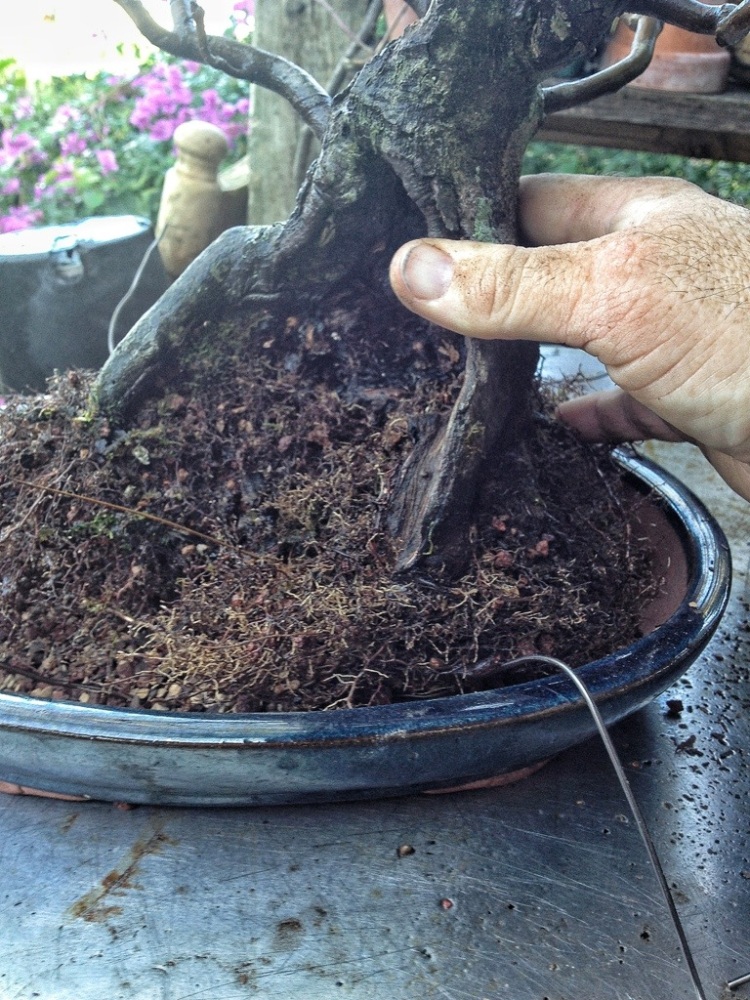
Take tree and push into the mound

Then, if you’re in the northern hemisphere, rotate clockwise (putting downward pressure) first
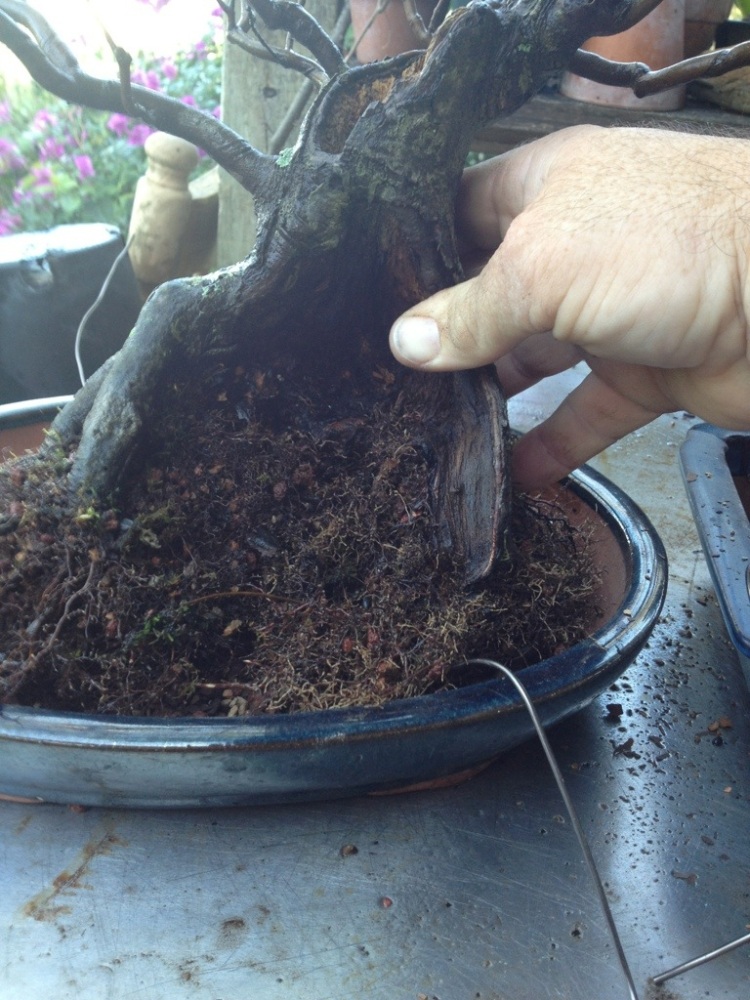
Then rotate anti-clockwise (if youre in the Southern Hemisphere it is opposite; start anti-clockwise and then rotate clockwise)

Keep twisting until the tree is sitting where you want it and is stable.
Make sure you tie your tree into the pot.
Backfill with good soil.
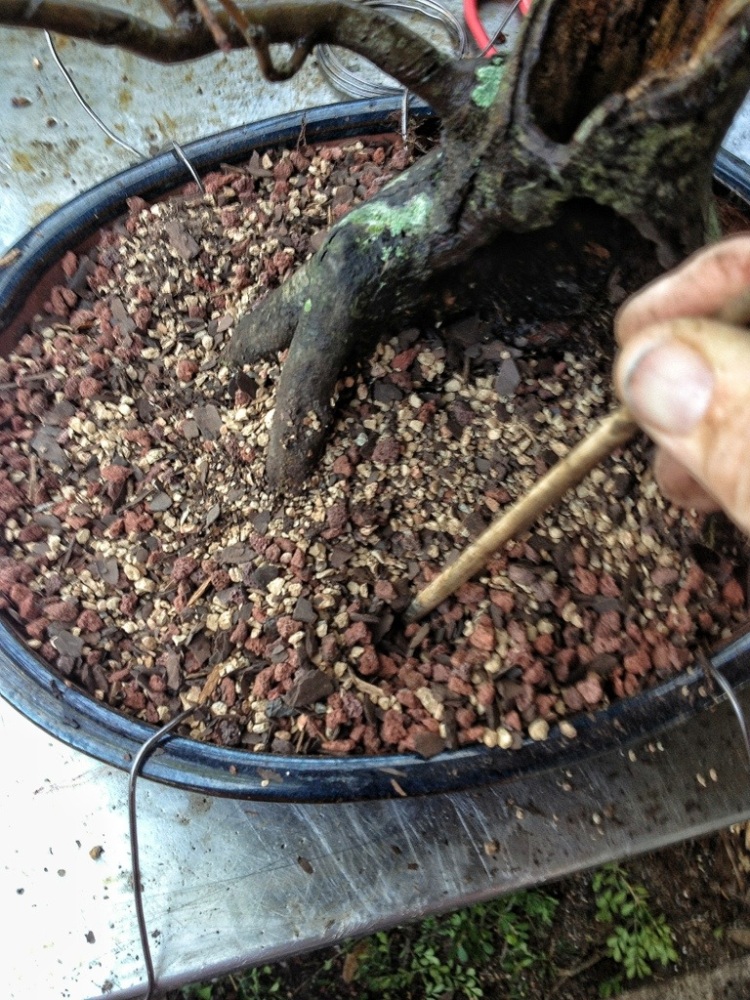
And using a chopstick, pencil, knitting kneedle (I know it’s spelled wrong, but I think it should, in that context, be spelled that way) or any other slim, pointy tool, tease the soil in between the roots.
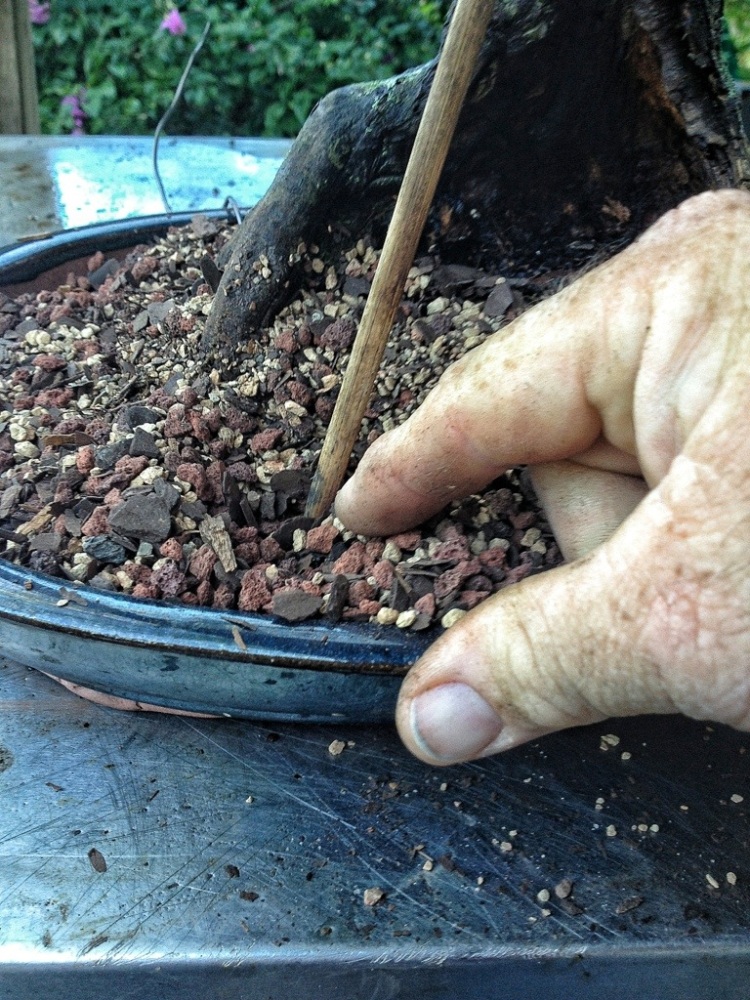
As you do this you’ll notice little hollows formed by the action of your tool. Keep filling the soil in until you don’t get any more. And tamp it down with your hands as a final step.

There we go.
Now for some pruning and wire.

This is growing in a bad spot (the top of the crotch of two limbs) and growing straight up. It goes.

This one is actually thicker than the branch it’s growing off of. That’s called a water sprout.

And that’s basically the drill; refine branches where three or more shoots are coming from one spot down to two shoots, remove upward and downward growing shoots and cut back to thinner branches and buds.
A tree goes from thick to thin. Taper, taper, taper.
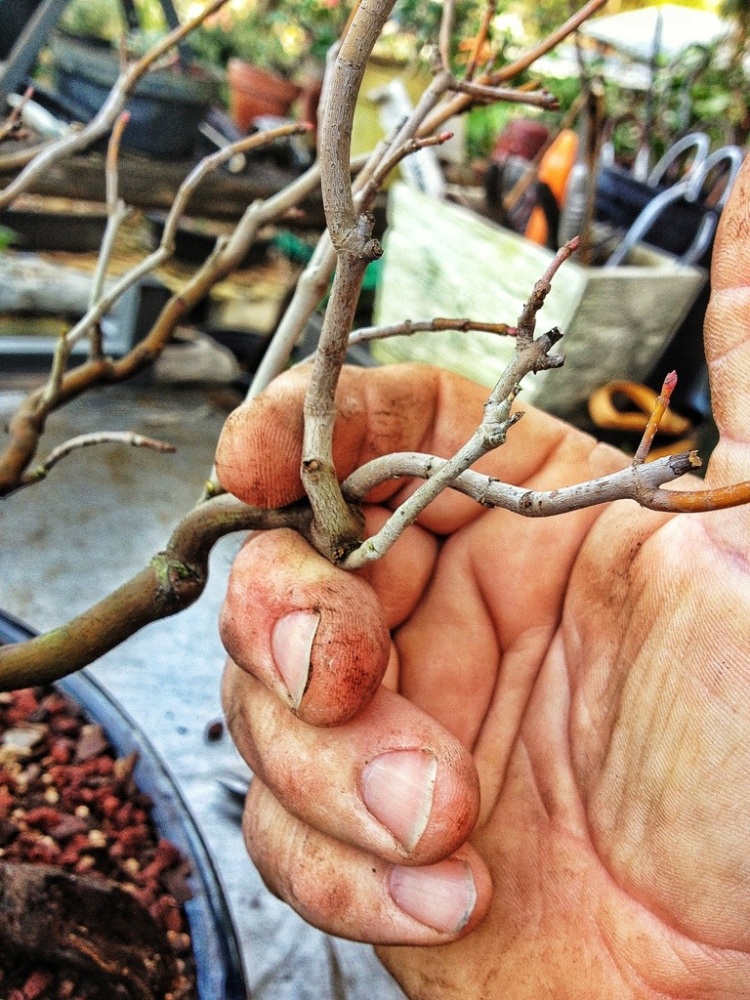
Here’s an interesting node cluster. The branching is very random and odd.
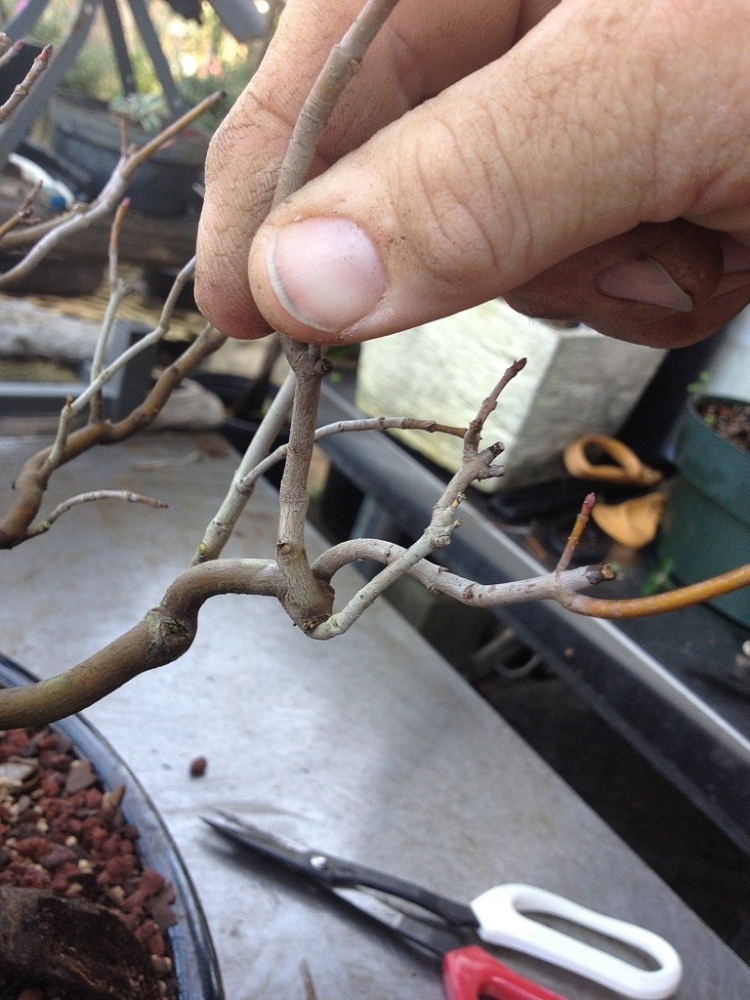
I need to remove one of these. I want to preserve the oddness of it definitely but I don’t want a knob to form there.

I’m keeping this feature because the movement and oddness of these branches can never be achieved with wire. Well, it can, but if its there already, why not leave it?
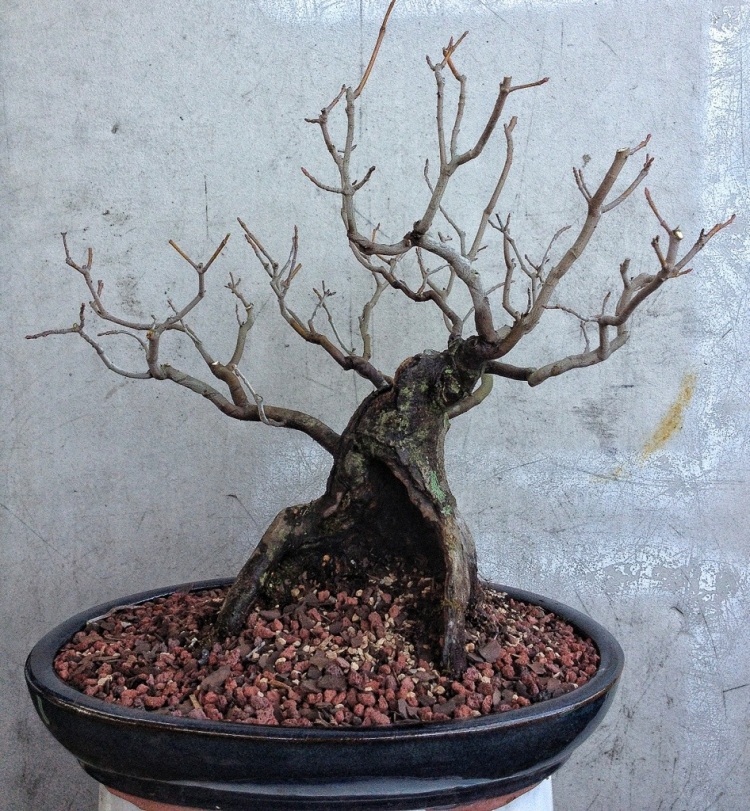
Trimmed and ready for some wire.
Normally I wouldn’t put heavy wire on an old, established bonsai like this but I’m considering this to be a rebuilding year.

This branch needs to go down and to the right
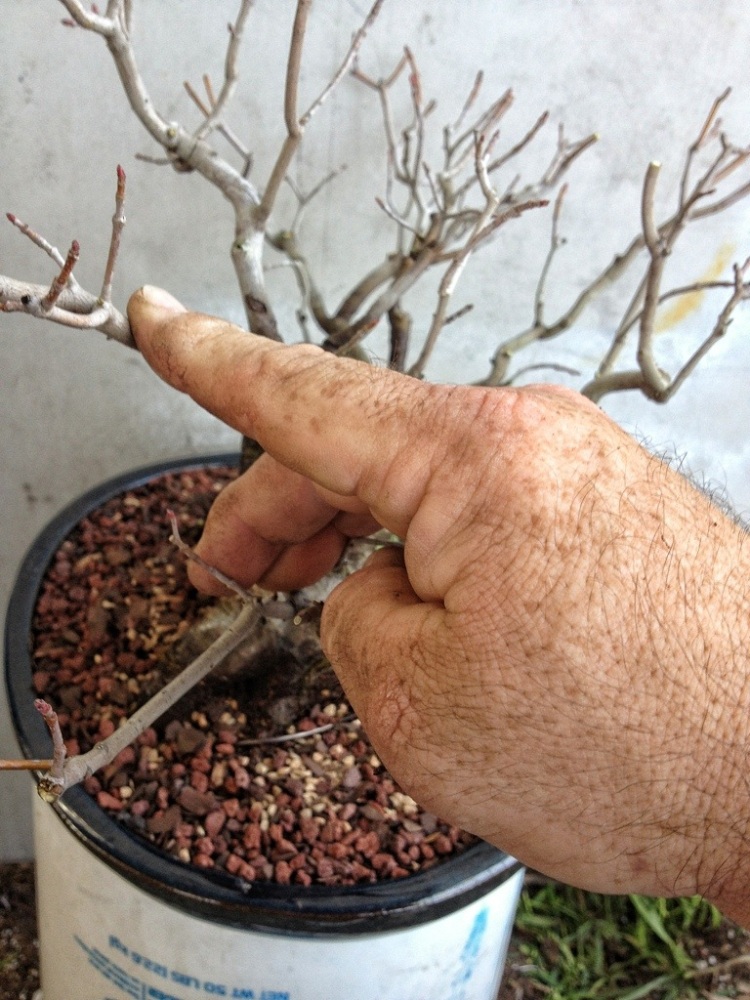
And that one needs to go that away.
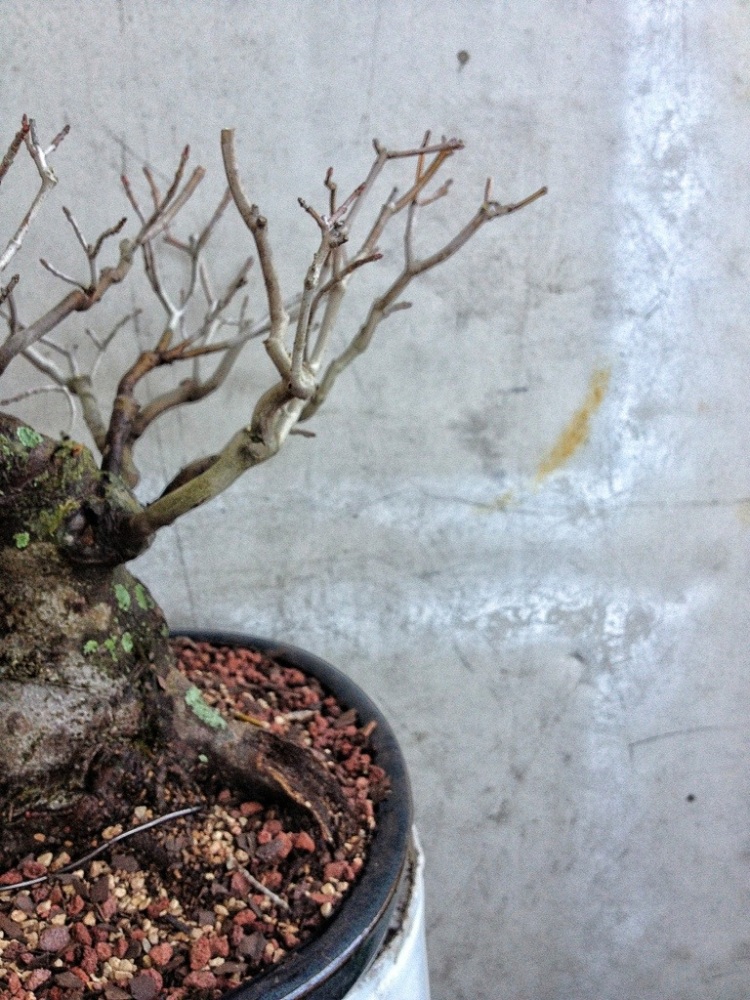
The one in the back needs to go down. Can’t even see it, can you?
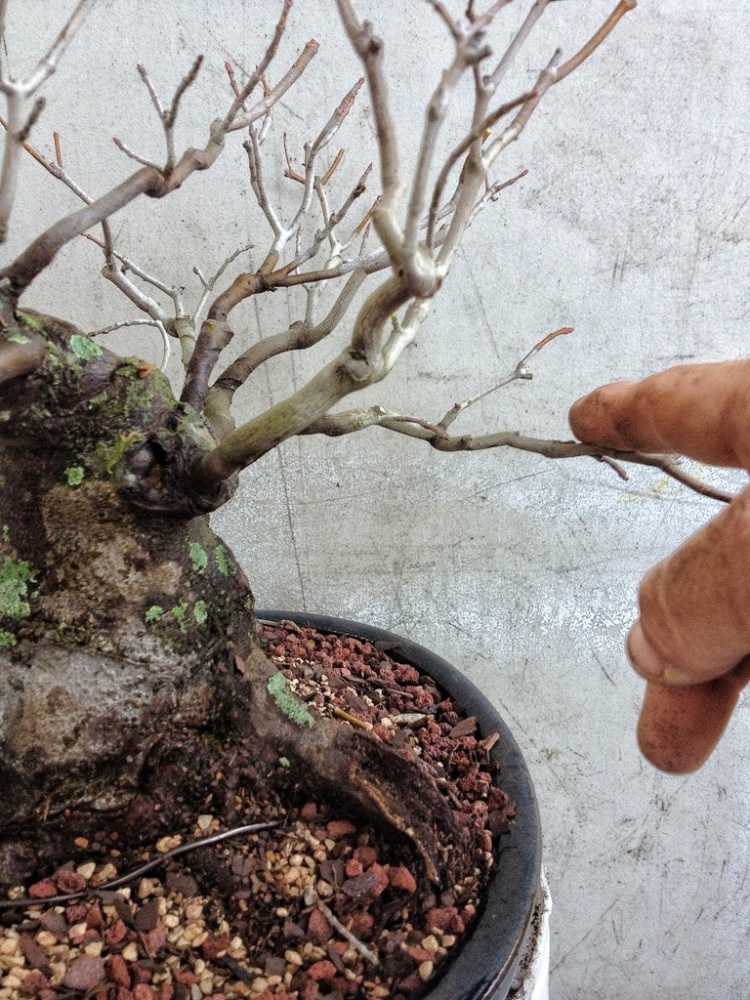
Down like so.
And so on and so on.
The
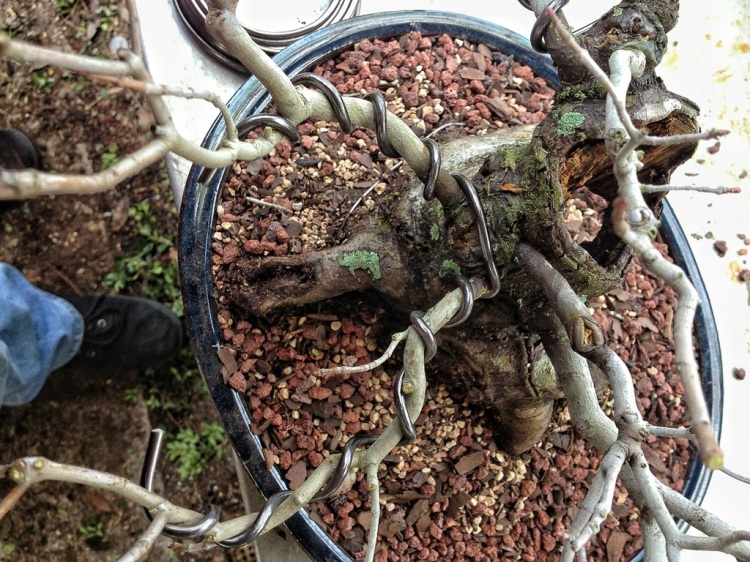
How’s that for a camera angle? That should win me a Pulitzer.
So the toughest part to build on a deciduous or a tropical tree is the crown. Some call this the apex but if you look up that word it is singular.
The top of a mature tree should be like this
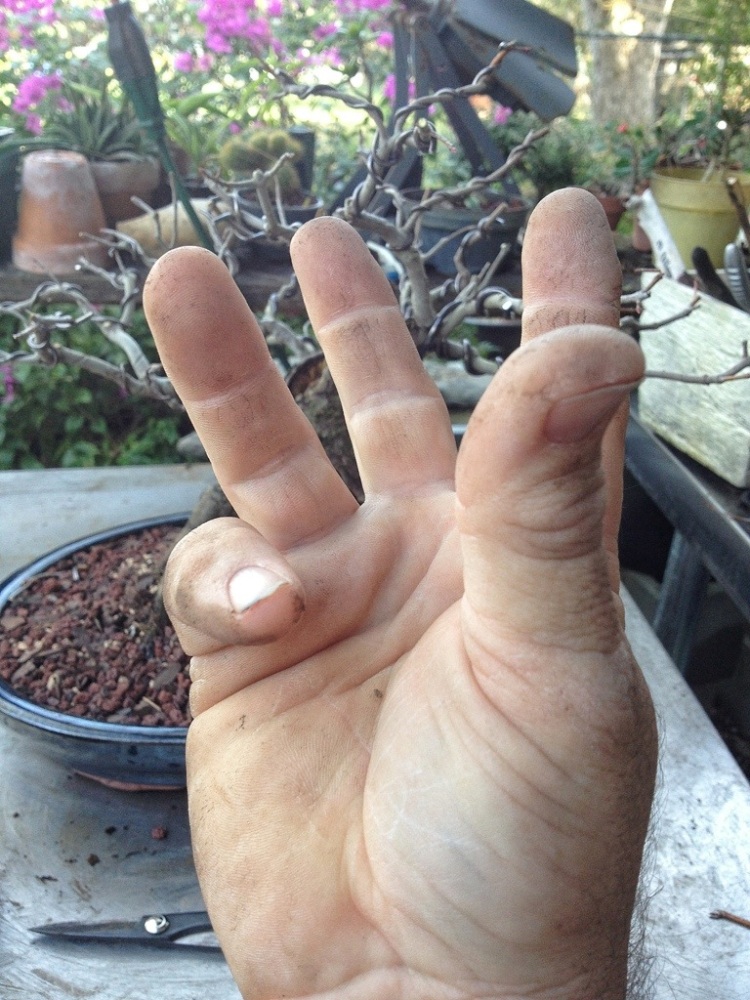
Don’t believe me. Go outside and look. I’ll wait………..no, I said a mature tree, try again. Google it maybe.
See? Told you so.
So, when you have the branching, wire them like so

And that gives you a nice rounded dome or crown.
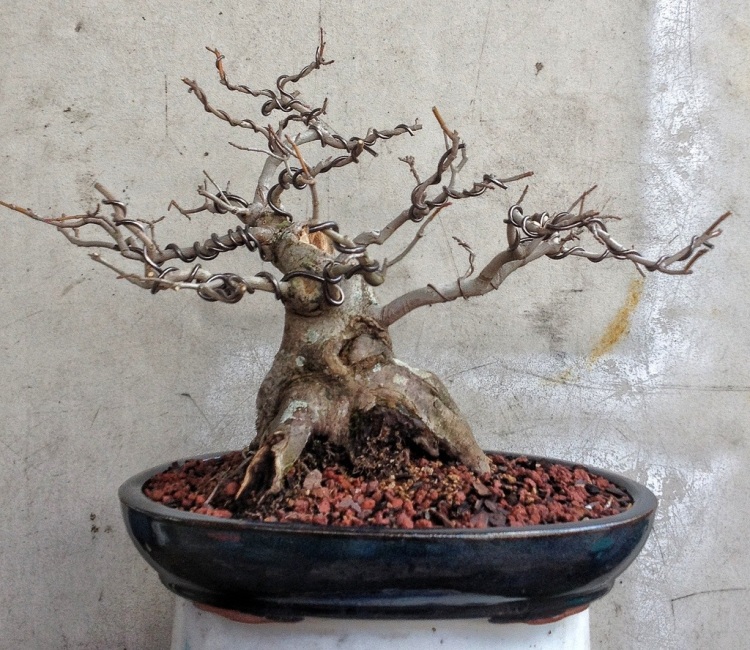
The rear.
You’ll notice that all sides look pretty good and, on another tree, could act as a front. It is this feature in the front that I am showcasing

It’s that hollow that makes the tree, in my opinion.
So the front

There is one weak limb that needs thickening.
I’ll post some pics in a month or so of the tree with foliage and again next winter to see how much ramification I’m able to get on it.

And the after.
Sometimes you just have to cut it back to reset the structure. Like I said, it’s a rebuilding year.




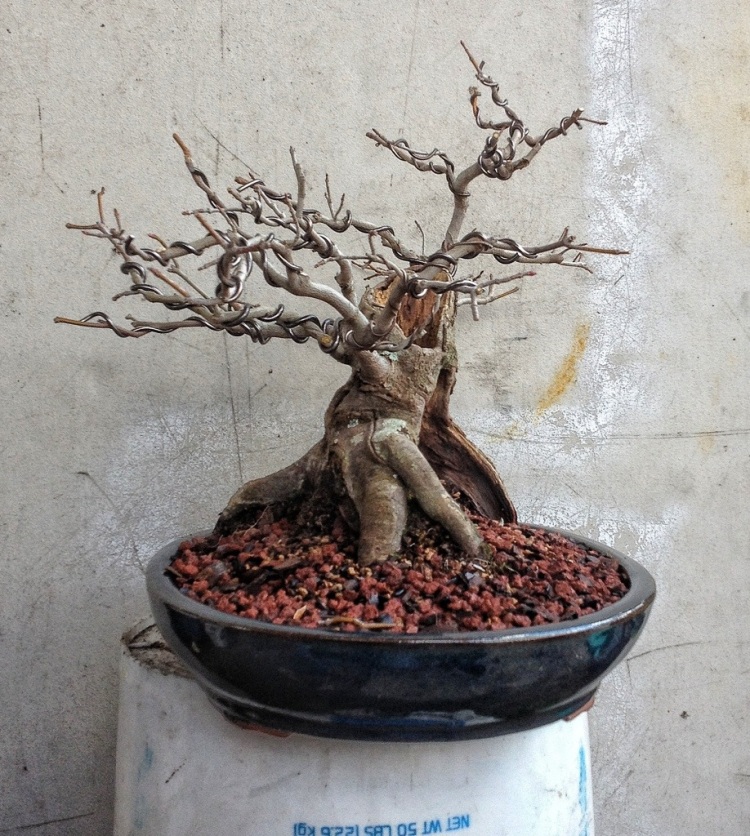

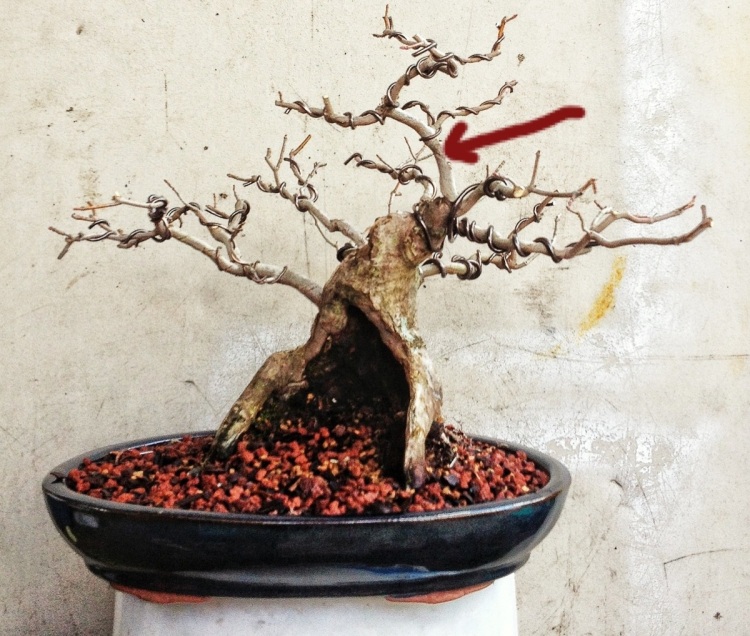
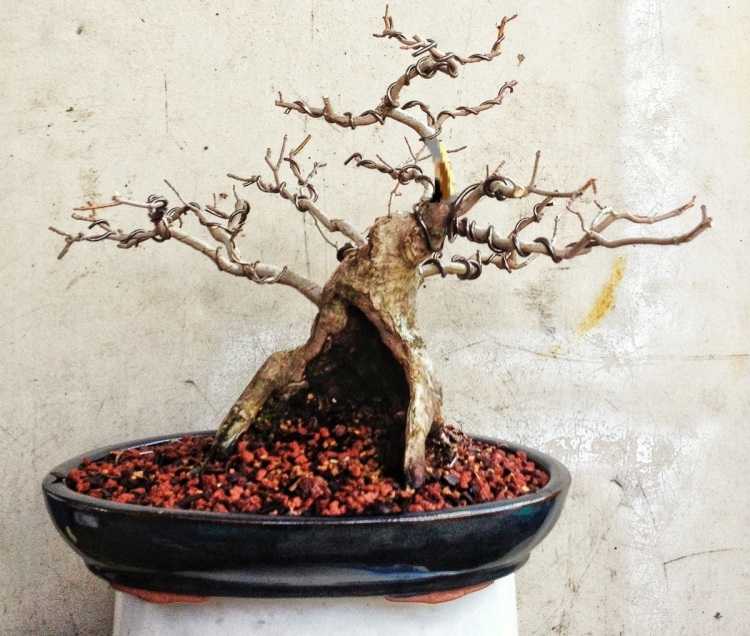
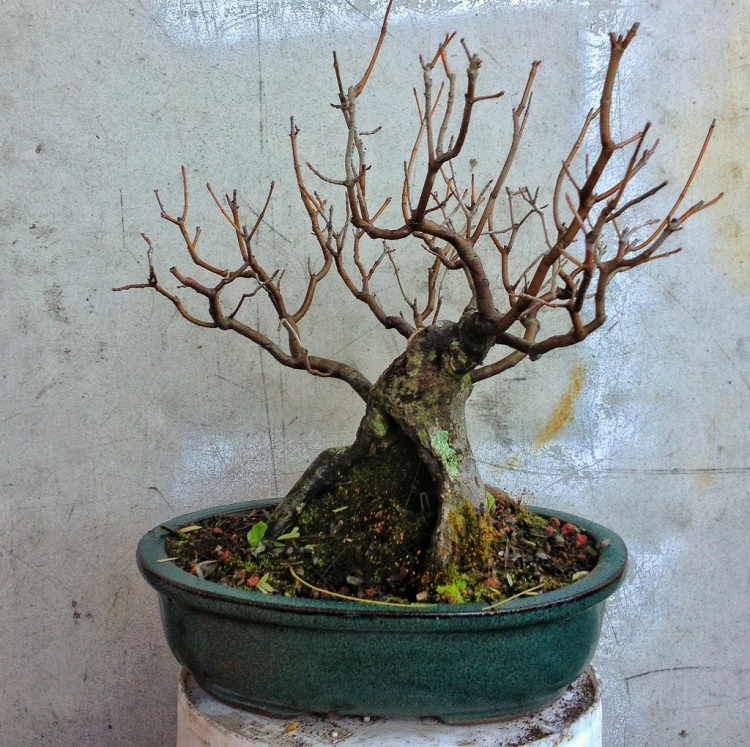
That is a real sweet tree. Love that trunk.
LikeLike
Dont you think it was much better before wiring it? I loved it.
LikeLike
Sometimes you have to bring the tree back and make it ugly in order to realize the future tree. A year and 4 months later it’s one of my best trees
LikeLike
I just started a little Rubrum from some twigs that took root in a rain gutter and had a couple beautiful red leaves in fall. It survived 2 Canadian winters now and this is the year where I might finally get a few good branches going. It’s April first, last of the snow melting and I need to put it in a pot.
What kind of pot and soil should I use ! I want to encourage branch growth. Should i use deeper pot to get it going, or is now a great time to use shallow pot? I’ve heard red maples (swamp maples) .. rubrums, like lots of water and can handle some soggyness?
I really want to keep it going (there are kind of two stems that could be twins) and a 3rd much smaller one. Should I do twins , or seperate all 3 and hope at least one turns out good.
I would love any help and advise for pot/soil/ and placement for this upcoming Ontario Spring / Summer. I’ll post pictures, if I get a response.
Thank you!
LikeLike
If you want bigger trunks you need to put them into bigger pots and let them get tall: height creates trunk girth. If you’re happy with the trunk size then go ahead and begin training as bonsai. If you do that, use a good bonsai soil with some organic components to it.
LikeLike